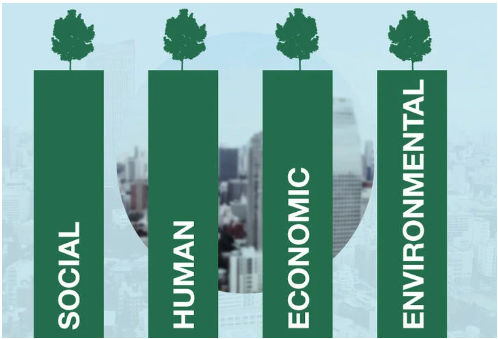The Higher Education for Economic Transformation (HEET) project at Sokoine University of Agriculture is expected to expand academic and administrative buildings at a large scale. However, before starting the project, the impact on the environment and the surrounding people must be considered. Social, economic, and environmental sustainability must be ensured by maintaining environmental quality and considering the well-being of the people during implementation, without forgetting the economic benefits that the local people will receive from the project. To comply with the National Environment Management Council (NEMC) and international standards on project implementation, an Environmental Impact Assessment (EIA) is conducted.
An EIA is a process that evaluates the potential environmental impacts of a proposed project or development. It is a tool used to identify and assess the potential environmental, social, and economic impacts of a project before it is implemented. The EIA process involves identifying potential impacts, assessing the significance of those impacts, and developing measures to mitigate or avoid those impacts. The EIA process is important because it helps to ensure that projects are designed and implemented in a way that minimizes negative impacts on the environment and surrounding communities.
The HEET project at Sokoine University of Agriculture has an Environmental and Social Management Framework (ESMF) that outlines the procedures for conducting an EIA. The ESMF provides guidance on how to identify and assess potential environmental and social impacts of the project. It also provides guidance on how to develop measures to mitigate or avoid those impacts. The ESMF is based on Tanzania’s Environmental Impact Assessment (EIA) and Audit regulations.
The EIA process for the HEET project involves several steps. First, the project team identifies potential environmental and social impacts of the project. This includes identifying potential impacts on air quality, water quality, soil quality, biodiversity, and human health and safety. Second, the project team assesses the significance of those impacts. This involves evaluating the potential magnitude, duration, and reversibility of the impacts. Third, the project team develops measures to mitigate or avoid those impacts. This includes developing plans for monitoring and managing the impacts of the project.
The HEET project team at Sokoine University of Agriculture is committed to ensuring that the project is implemented in a way that minimizes negative impacts on the environment and surrounding communities. The project team is working closely with the NEMC and other stakeholders to ensure that the EIA process is conducted in a transparent and participatory manner. The project team is also committed to ensuring that the local communities benefit from the project by providing employment opportunities and supporting local businesses.
The HEET project at Sokoine University of Agriculture is an important development project that has the potential to bring significant economic benefits to the local communities. However, it is important that the project is implemented in a way that minimizes negative impacts on the environment and surrounding communities. The EIA process is an important tool that can help to ensure that the project is designed and implemented in a way that is socially, economically, and environmentally sustainable. The project team at Sokoine University of Agriculture is committed to ensuring that the EIA process is conducted in a transparent and participatory manner and that the local communities benefit from the project.
important links

